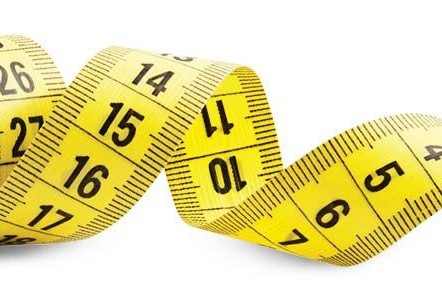As we move into full winter mode, now is a good opportunity to prioritise feed to ewes based on body condition score. Laura McQuillan-Reese writes.
As stock go through the scanning crate, it’s a great opportunity to get a hand over the ewes and work out where things are at. Prioritising the lighter-conditioned ewes to better feed supply will provide better outcomes at weaning.
The relative profitability of sheep breeding enterprises is largely determined by kilograms of lamb sold per hectare. Lambing percentage and average lamb weaning weight are two of the most important factors which determine this outcome. A key driver influencing both of these factors is the body condition score (BCS) of the ewe, and in particular, the percentage of ewes at or above a BCS score of 3.0 at mating and lambing.
Body condition scoring is an important method to measure the muscle and fat reserves of ewes. This gives us an indication of condition regardless of frame size.
In preparation for lambing, ewes should have substantial reserves available as they move into the highly demanding phase of peak lactation.
Throughout mating and early pregnancy, a BCS of 3.0 is ideal, aiming to be no greater than 3.5 at lambing. The benefits of measuring ewe BCS at scanning means that lighter ewes bearing multiples, can be identified and preferentially fed to minimise the risk of lamb losses. Upon identifying lighter ewes at scanning, there is an opportunity to improve ewe body condition score up to five weeks before lambing. With such a tight turnaround, ewe BCS at scanning should really be set up by good management from weaning the year before. From scanning to lambing, the goal is to protect and minimise losses of body condition score.

Ewe BCS at lambing
It is expected that ewes should drop to a BCS of 2.5 by weaning. This change in BCS from lambing to weaning is an indicator of maternal success in the flock. A ewe that drops body condition score in this period is more likely to have successfully reared lambs with a higher weaning weight than one that has maintained condition throughout lactation.
Don’t cull a ewe at the end of lambing because she is just ‘a bit skinny’. These ewes will have been the mothers that grew healthy, heavier lambs because they partitioned more of their energy reserves into producing milk for the lambs, rather than storing it themselves. However feeding over winter and early lactation determines if the ewes can be put into a position to be able to do that.
Table 1 shows the improvement on breeding performance, with an average flock BCS of 2.0 vs 3.0 at lambing.
Some of the key assumptions used included:
- An increase of 8kg of ewe liveweight to lift ewe BCS from 2.0 to 3.0;
- About a 2% increase in reproductive potential (scanning percentage) for every kg of ewe liveweight gained between BCS 2.0 to 3.0;
- A 12% increase in lambing percentage by lifting ewes from BCS of 2.0 to 3.0;
- A 2.6 kg lift in lamb weaning weight by lifting ewe BCS from 2.0 to 3.0; and
- Lambs were valued at weaning at a $3.80/kg store lamb price (based on 47% of an $8/kg lamb schedule) to capture average lamb value at weaning.
- Table 1 shows how improved body condition score influences the bottom line. Achieving an average BCS of 3.0 at lambing was 16% more profitable than having ewes at an average of 2.0 at lambing. This is because ewes in better condition at lambing wean more lambs per ewe with higher weaning weights per lamb.
- Ewe BCS drives productivity across all facets of the sheep breeding operation, from fecundity at tupping to the ability to provide sufficient milk supply throughout lactation. Adopting ewe body condition scoring into the farm management toolbox improves your ability to better manage the condition of ewes in the herd and this can improve performance. This is because the information that body condition scoring gives you allows you to manage the lighter ewes in the mob, minimising tail enders.
Planning for next mating
- Post weaning is your best opportunity to make the greatest changes to ewe BCS. While feed is in good supply, think about the benefits that you may be able to achieve from improving 50% of the ewe flock’s BCS by one point and maintaining that throughout the course of the year.
- Once weaned, ewes can be separated according to BCS. This improves the efficiency of feed utilisation and gives ewes that have put more into their lambs the best chance to recover prior to the next round of mating. Increasing BCS during the post weaning period and before mating is the best way to increase the number of lambs born, number of lambs weaned and total lamb weaned weight.
- Consistent body condition scoring throughout the year is a key driver for success in lamb production systems. It goes hand in hand with feed budgeting and informs better decisions for feed allocation. The onfarm results from collecting the BCS data and subsequent feed management choices are well and truly worth the effort.
- If you want to have a crack at body condition scoring yourself, there’s a number of resources to assist your training. Next time you’re in the yards, try running your hands over the ewes in the race and see if you can get a feel for the different body condition scores. Think about cover over the ewe’s hip bones and ribs, and try to identify lighter and heavier conditioned ewes.
- Contacting your local vet or accessing online tools are good starting points to incorporate body condition scoring into your farm business.
Laura McQuillan-Reese is a farm consultant with Perrin Ag in Rotorua.





